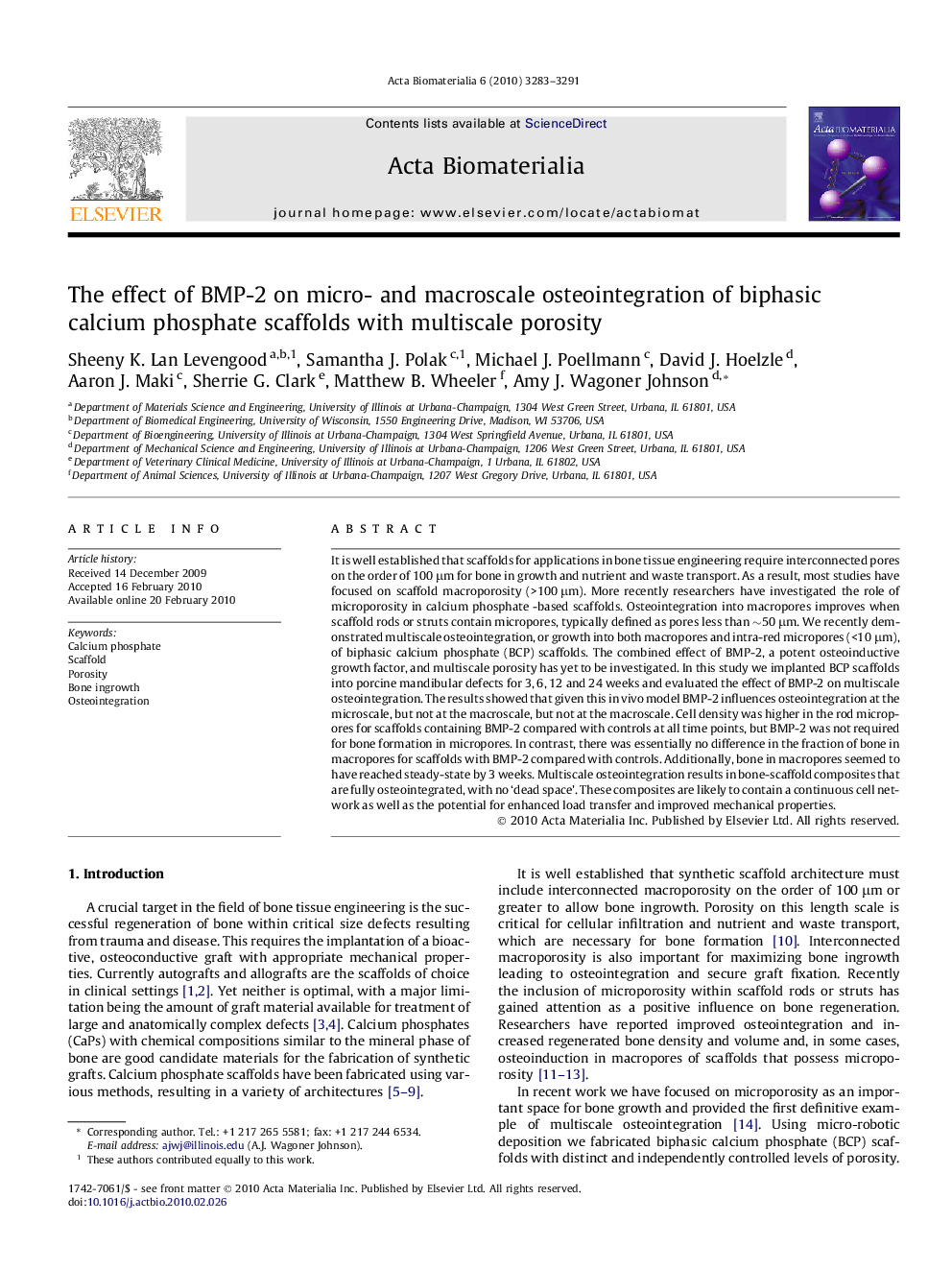| Article ID | Journal | Published Year | Pages | File Type |
|---|---|---|---|---|
| 2294 | Acta Biomaterialia | 2010 | 9 Pages |
It is well established that scaffolds for applications in bone tissue engineering require interconnected pores on the order of 100 μm for bone in growth and nutrient and waste transport. As a result, most studies have focused on scaffold macroporosity (>100 μm). More recently researchers have investigated the role of microporosity in calcium phosphate -based scaffolds. Osteointegration into macropores improves when scaffold rods or struts contain micropores, typically defined as pores less than ∼50 μm. We recently demonstrated multiscale osteointegration, or growth into both macropores and intra-red micropores (<10 μm), of biphasic calcium phosphate (BCP) scaffolds. The combined effect of BMP-2, a potent osteoinductive growth factor, and multiscale porosity has yet to be investigated. In this study we implanted BCP scaffolds into porcine mandibular defects for 3, 6, 12 and 24 weeks and evaluated the effect of BMP-2 on multiscale osteointegration. The results showed that given this in vivo model BMP-2 influences osteointegration at the microscale, but not at the macroscale, but not at the macroscale. Cell density was higher in the rod micropores for scaffolds containing BMP-2 compared with controls at all time points, but BMP-2 was not required for bone formation in micropores. In contrast, there was essentially no difference in the fraction of bone in macropores for scaffolds with BMP-2 compared with controls. Additionally, bone in macropores seemed to have reached steady-state by 3 weeks. Multiscale osteointegration results in bone-scaffold composites that are fully osteointegrated, with no ‘dead space’. These composites are likely to contain a continuous cell network as well as the potential for enhanced load transfer and improved mechanical properties.
